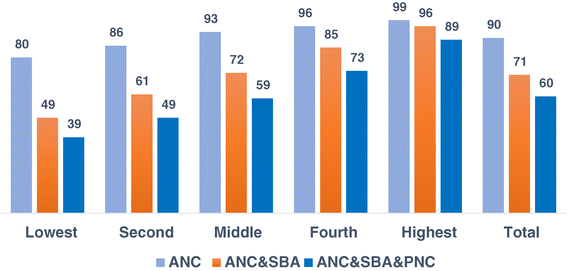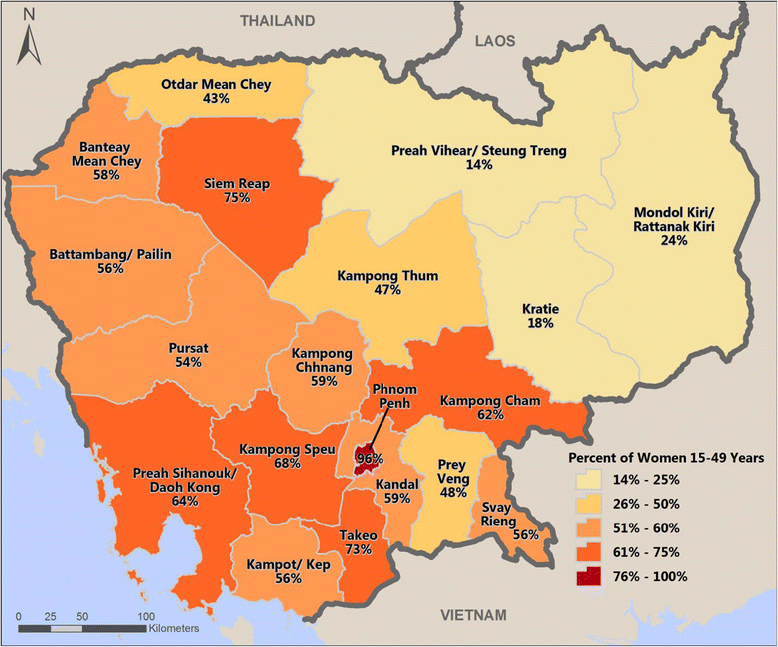Levels and determinants of continuum of care for maternal and newborn health in Cambodia-evidence from a population-based survey
- PMID: 25885596
- PMCID: PMC4371879
- DOI: 10.1186/s12884-015-0497-0
Levels and determinants of continuum of care for maternal and newborn health in Cambodia-evidence from a population-based survey
Abstract
Background: Continuum of care throughout pregnancy, birth, and after delivery has become a key program strategy for improving the health of mothers and newborns. Successful program implementation to improve the continuum of care relies on a better understanding of where the gaps are in seeking care along the pathway and what factors contribute to the gaps.
Methods: Using data from the 2010 Cambodia Demographic and Health Survey, we examine the levels of service use along the continuum of care. Three sequential regression models are fitted to identify factor(s) that affect women from getting skilled birth attendance (SBA) after receiving antenatal care (ANC), and from getting postnatal care (PNC) after having both ANC and SBA.
Results: Three of every five Cambodian women received all three types of maternal care-antenatal care, skilled birth attendance at birth and postnatal care -for their most recent birth, however with substantial regional variation ranging from 14% to 96%. The results highlight that mother's age, educational attainment, urban residence, household wealth, lower birth order are associated with women's use of antenatal care and their continuation to using skilled birth attendant. Health insurance coverage also increases use of antenatal care but not skilled birth attendant. Having four antenatal care visits and receiving better quality of antenatal care affected women's subsequent use of skilled birth attendant. The odds of having skilled birth attendant increases by 30 to 50% for women who received blood pressure measurement, urine sample taken, and blood sample taken as part of antenatal services. Household wealth status, urine sample taken, and delivery at a health facility were the only three factors significantly associated with the continuation from having skilled birth attendant to receiving postnatal care.
Conclusions: Cambodia has made remarkable progress in extending the reach of maternal health care in most areas of the country. Future program efforts should focus on the Northeast part of the country where the lowest level of service use was found. Poor women suffered from lower access to continued care and extending the health insurance coverage might be one way to help them out. Quality of antenatal care is connected to women's use of skilled birth attendant and postnatal care and should be given more focus.
Figures
References
-
- National institute of Public Health, National Institute of Statistics, Macro O . Cambodia Demographic and Health Survey 2005. Phnom Penh, Cambodia and Calverton, Maryland, USA: National Insitute of Public Health, National Institute of Statistics and ORC Macro; 2006.
-
- National Institute of Statistics, Directorate General for Health, Macro I . Cambodia Demographic and Health Survey 2010. Phnom Penh, Cambodia and Calverton, Maryland, USA: National Institute of Statistics, Directorate General for Health and ICF Macro; 2011.
-
- WHO . Reduction of maternal mortality: A joint WHO/UNFPA/UNICEF/World Bank statement. Geneva: World Health Organization; 1999.
MeSH terms
LinkOut - more resources
Full Text Sources
Other Literature Sources
Medical



